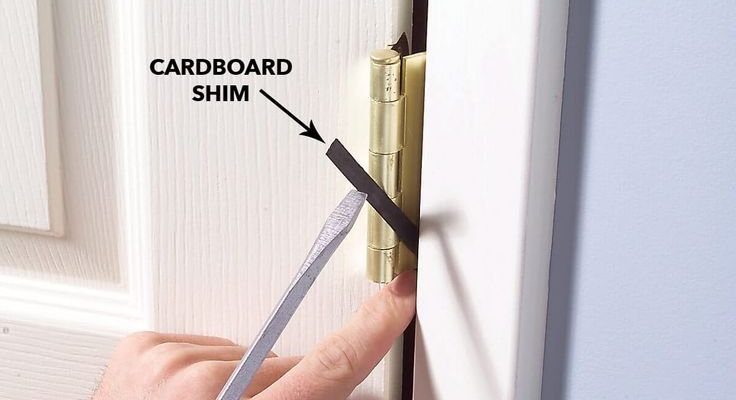
Fixing a swaying barn door isn’t rocket science, but it does require a little understanding of how these doors work. Think of it as tuning a guitar; you need to adjust the strings to get the perfect sound, just like you need to tweak the hardware on your door for it to glide smoothly. In this guide, we’ll walk through the steps to get that door back on track, using common tools and a straightforward approach.
Understanding Why Your Barn Door Swings
Before we dive into the fixing part, let’s talk about why your barn door might be swaying. There are a couple of reasons for this. First, it could be a matter of improper installation. If the door isn’t hung level or the track isn’t aligned correctly, it’ll sway like a boat on choppy water.
Another reason could be loose hardware. Over time, screws can work their way loose, causing the door to shift and swing more than it should. Lastly, the weight distribution of the door itself plays a role. If the door is heavy on one side or you have a natural unevenness in your walls, it can lead to swaying.
Gather Your Tools
Ready to tackle that swaying barn door? First, you’ll need to gather a few tools. Having everything at hand will make your job smoother. Here’s a quick list:
- Level: To ensure your door is straight.
- Screwdriver: For tightening or adjusting screws.
- Wrench: If you need to adjust any brackets.
- Measuring tape: To check the alignment and fit.
- Wood shims: These can help balance the door.
Having these tools nearby will save you time and make the process a lot less frustrating. Believe me, going back and forth to find a tool can derail your progress faster than a squirrel on a sugar rush.
Check the Installation of Your Barn Door
Now that you have your tools, let’s start by checking the installation of your barn door. This is where you’ll really need your level. Begin by placing it on top of the door. If the bubble isn’t centered, your door is likely not level.
If your door is indeed uneven, you may need to adjust the hardware. Loosen the brackets slightly and reposition them. To get it level, you might need to slide wood shims under the brackets until everything is just right. Once it looks level, tighten everything back up.
This step is crucial because if your door swings because of improper installation, no amount of fixing will last if things aren’t set correctly.
Tighten All Hardware
Next up is to tighten all hardware. Over time, screws and bolts can loosen, and that’s often the culprit behind a swaying door. Inspect every bracket, screw, and bolt. If something looks loose, grab your screwdriver or wrench and secure it tightly.
You’ll want to check the top track where the door slides as well as the bottom guide if your barn door has one. A loose top track allows the door to sway back and forth. It might feel tedious, but trust me, this step can prevent future headaches.
Adjust the Track Width and Alignment
If the door is still swaying, let’s move on to the track itself. Sometimes, the track width can be adjusted. Take a close look at the mounting brackets. If they can slide, try moving them slightly to adjust how the door sits on the track.
Once you’ve adjusted the width, check the alignment of the track. It should run parallel to the wall and the door itself. If you notice any gaps or misalignment, you’ll want to correct those. The aim is to create a straight path for the door to glide along without any extra motion.
Balance the Weight of the Door
Another factor in fixing your sliding barn door is weight distribution. If your door is heavier on one side, it will naturally tend to sway in that direction. Take a moment to assess if there’s any unevenness.
In some cases, you might need to add or remove weight. This could mean adjusting the door itself, swapping out the hinges, or adding additional guide wheels to support the weight evenly.
If shimming isn’t enough, consider consulting a hardware specialist for stronger options to balance the door efficiently.
Final Adjustments and Testing
Once you’ve made all these adjustments, it’s time for some testing. Open and close the door several times. Watch how it moves. It should slide smoothly without excessive swaying or sticking.
If you notice any remaining movement, go back and double-check your previous steps. Sometimes it takes a bit of fine-tuning to get everything just right. If all else fails, consider seeking advice from a professional. They may see something you might have missed.
Maintenance Tips for Your Barn Door
After you’ve fixed your swaying door, think about how to keep it in top shape. Regular maintenance can help avoid future problems. Here are a few tips:
- Check hardware regularly: Make it a routine to check screws and brackets at least once a month.
- Clean the track: Dust and dirt can accumulate in the track, causing the door to misalign.
- Lubricate moving parts: Use a silicone-based lubricant on the wheels of the door to keep things gliding smoothly.
- Check the wall for settling: If your house settles, it can affect the door’s alignment, so be aware of any shifts.
Taking these simple steps can prolong the life of your barn door and keep it functioning correctly, saving you from future headaches.
In conclusion, fixing a sliding barn door that sways excessively might take a little patience and effort, but it’s absolutely doable. By understanding the cause and tackling the key issues—like installation, hardware tightness, track alignment, and weight distribution—you can restore balance to your door. With a little love and some regular maintenance, you’ll have a stylish, functional door that glides smoothly and adds charm to your space.
